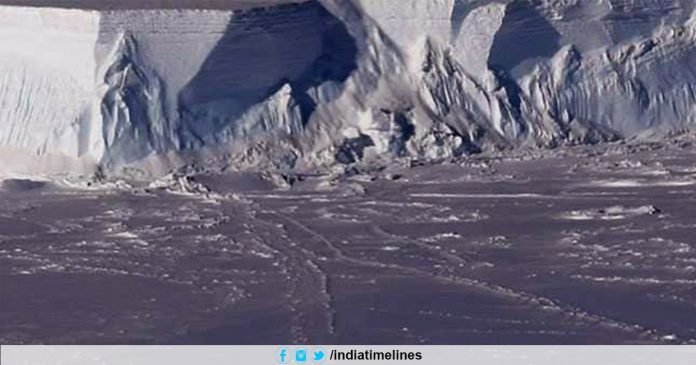
Antarctica Iceberg threatens to break the size of New York City: A chasm and a crack at Antarctica’s Brunt Ice Shelf are crawling closer to each other, and when both meet in the end, a slab of ice will break twice in the city of New York and swim in the ocean. Two glacial flaws are about 2.5 miles away, and they may take days or months to finally resonate. But when they do, then the Himandhan, which is formed in the Weddell Sea, will not be the largest in the orbit of Antarctica. In fact, it can not even make the historical top 20.
Its size is not what makes it remarkable – this is what breaks itself about the natural process of an iceberg, as the climate change can make other ice shelves unstable like the Brunt, and how the movement is serious scientific Can put human residents in danger. For more than 60 years there.
Antarctica Iceberg threatens to break the size of New York City
Since 1956, British scientists are studying the environment at Geology, Glaciology and Halley Research Station on Brunt Ice Shelf. The laboratory has been torn and rebuilt several times over decades and took its most recent form in 2012 when the Halley VI Research Station – a mobile, modular structure – gave its first scientific data.
In the same year, satellite monitoring showed that a large chasm in the ice shelf – officially named Chasm 1 – was growing for the first time in more than three decades. According to the definition of glaciologists, a chase is described as a very large rift, which extends from the ice shelf to the sea. If this continued to increase, Chasm 1 would have finally broken the Halley VI station, so the British Antarctic Survey decided to move its researchers in the 2016 and 2017 to a safe distance from inland and chasm. But in October 2016, another crack – called Halloween crack – was made 17 kilometers north of the research station and continues to move east.
Antarctica Iceberg threatens to break the size of New York City. Since two years, Chasm has crepe close to the Halloween crack, which has created scientists for the inevitability of an iceberg breakaway that could have more results for the stability of the entire Brunt Ice Shelf. NASA predicted that the mass may be 1,700 square kilometers (660 square miles), which is more than 100 years, will make the largest iceberg that breaks off Brunt Ice Shelf.
Christopher Shuman, a research scientist at the University of Baltimore County, Joint Center for Earth Systems Technology, in NASA, said, “It is a big banyan but is not bigger than the Antarctic standards.” “The impact on this area is that these changes have been re-activated, and we are not sure why a new crack (Halloween crack) made it, which was considered a pretty stable ice shelf.”
Antarctica Iceberg 2x Size of NYC Could Calve
Antarctica Iceberg threatens to break the size of New York City. Scientists have studied glacier shelves for more than 100 years, so it is difficult to say that the iceberg is cooling at a higher rate at this place on the Brunt Ice Shelf, the glaciologist Helen Fricker of the Scripps Institution of Oceanography said.
“I do not think you can combine a quiet event with climate change,” said Fricker. “It is not to say that Antarctica is not going through rapid changes that are related to climate change, but it is in another area of Antarctica.”
Iceberg calving is a normal, natural process that helps maintain Antarctica’s pure land mass. Floating snow cabinets scorch the shores of the continent, grow towards the top and heavy snakes fall outwards. (You can see how Brunt Ice Shelf is here.) “In this way, Antarctica works,” said Fricker. “Iceberg come and go icebergs.”
Antarctica Iceberg threatens to break the size of New York City. Research shows that in the west of the continent, where the water is warmer than the people around the brunt, snow shelves from the bottom are getting thinner. In that area, scientists say that climate change has a clear role.
On Brunt, there is no immediate threat to Halley VI or those residing there. Its current location is outside the estimated iceberg mass, but a spokesman for the British Antarctic Survey said that researchers are monitoring changes in the structural integrity of the ice shelf.
In one part of that surveillance, precautionary measures have been made to stop operation on the research station for the last three Antarctic winters, in which there is dark and heavy snowfall of months. Under those conditions, it would be more dangerous to start a rescue operation if the cracks in the protection of researchers at Halley VI and Chasm have to be compromised. For Breaking News, you can visit www.indiatimelines.com.
Currently, staff members are preparing to leave for winter 2019. The British Antarctic Survey told The Washington Post in a statement, “There should be a lot of change in the situation of snow in the event of a sudden emergency before the departure of the staff from the station.” “The station is designed to move. The frequency of transfer depends very much on how ice behaves in the future.”



































